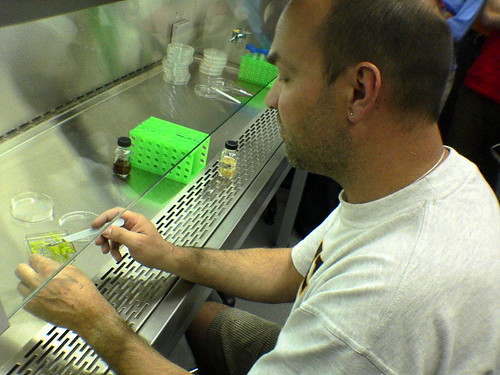By Allison Agnock
Would you like to try growing your own fresh fruits year round, but live in an area where, due to cold temperatures, snow or poor soil, you are unable to do so outdoors? Instead, why not try hydroponics, a form of gardening in which you can grow plants without any soil at all. There are several different types of fruits you could consider growing in a hydroponic manner.
One aspect of plant culture that is wise to keep in mind is to pay attention to the growing conditions a particular plant needs to survive and thrive. Poor choices for hydroponic-style gardening are succulents, because they will only thrive in dry conditions, and you are attempting to grow plants in the medium of water. Water-loving plants make a good choice for hydroponic gardening, because the plants will be growing in water. Melons are a good example of a fruit that grows well in this circumstance. Watermelons and cantaloupe can both be grown successfully hydroponically because both are water loving plants and can thrive in this sort of growing medium.
Although not considered a fruit by some, nevertheless tomatoes meet the scientific criteria for classification as a fruit. Tomatoes grow wonderfully in a hydroponic environment as long as they have excellent lighting.
Other fruits that grow well hydroponically are berries. You can grow strawberries, blueberries, blackberries and raspberries very well in a hydroponics system.
Grapes are another favorite fruit that you can grow using this method as well. Both table grapes and wine grapes have been successfully grown using hydroponic methods.
Surprisingly, there are some trees that can be grown in a hydroponic manner. Banana trees are one, and dwarf citrus trees, such as lemons, are another. Imagine growing fruits that would normally require a tropical or very warm climate to produce fruit during an Alaskan or Scandinavian winter, through the appropriate use of a hydroponic plant system and the correct lighting and proper nutrition.
All plants will receive absolutely no nutrients from soil, since this system uses none, so the gardener must supply the plants with nutrients in the form of a nutrient solution. You water the plant with the nutrient, and the plant takes the food up through its roots. Typically the nutrients are dissolved in distilled water, because the water needs to be very pure. If you use your own water, you will likely want to have the water tested for elements that may already be present, so that you do not provide too much of any one nutrient.
Hydroponic-system gardening is an excellent way to increase fruit yields over conventional soil gardening, and it allows gardeners to grow fruits that would otherwise not be possible in their climate or soil.
Growing Fruits Using Hydroponics
7:08 AM
ThanateTan







